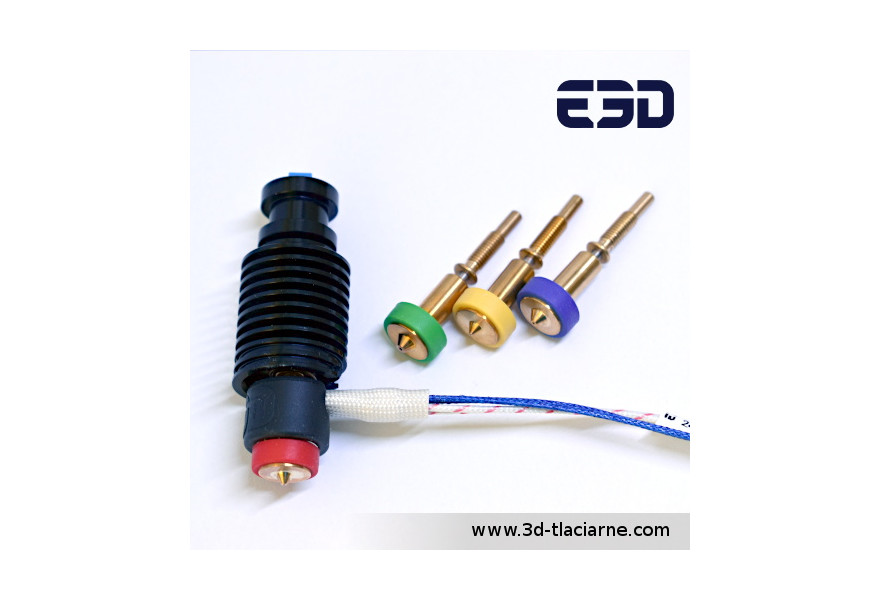


In Filament -> Cooling thresholds -> "Min print speed", change the value to 25mm/s (increase).In Filament -> Cooling thresholds -> "Slow down if layer time is below", change the value to 5s (decrease).For small features that print badly try modifying the cooling thresholds in the Material settings of Prusa Slicer with the values below:.Personally I don't consider this to be a reasonable long term solution! This is a good thing to try in the live tuning of a print - drop by 10% say, leave for a bit and repeat until 50% say. Others may constrict too much- check the olive! Bad tubes have a lot of slop and will cause problems. Check the PTFE tube between the extruder and print head.This is a good thing to try in the live tuning of a print. Increase printing temperature - it seems that the thermistor is reporting temperatures higher than they are at the nozzle.
PRUSA MINI E3D REVO FULL
2 full turns is way beyond reasonable and I think it's time to find the problem elsewhere! Start from all the way back and adjust in quarter to half-turns but only when there is skipping. Increasing the tension every time the extruder starts skipping is not a fix. Having issues with the Revo Micro? Try the following I'm used to printing PLA at 190℃ because it gives a duller finish that I like but I've increased to 215℃ to get around this issue. I don't think this is going to be a fix for everything I print, and I really do think that E3D need to step up and properly address these issues. In Filament -> Cooling thresholds, "Slow down if layer time is below" changed to 5s, and "Min print speed" to 25mm/s. This where the other thread really came in handy. The base was ok but the legs were absolutely awful so I stopped the print and tried again with the same results. I started trying to print something a little more solid - a figure for father's day from here. Unfortunately the next one had a fat line of under-extrusions and I felt deflated. After all of the changes so far (stripped and cleaned extruder, relaxed tension, slower speeds, higher temperatures), I finally got one that was better These are all perimeters so print fairly slowly anyway. I started printing some dog-tags, which are my main product and had always printed on the mini. This alone suggests that the Micro is not an equivalent replacement, especially given that E3D advertise this as being lighter and therefore able to print faster! I reduced the infill speeds to 60mm/s and I managed a complete print another hollow model. I was still getting poor prints so checked the printing parameters specified by E3D here, which rather shockingly are quite conservative when compared to the stock Prusa Mini+ profile - Max speed of 60mm/s (E3D) vs 80mm/s (Prusa). The model had no infill so the perimeter speed was keeping the overall speed quite low. I tried another print from scratch with the speed dropped to 50% and the temperature up by 15℃ and it finished. I dropped the speed to 50% and this helped. This helped a bit more.ĭuring another print I started getting extruder clicking and under-extrusions again so I live-tuned the temperature up by 10℃, which stopped it for a while but I had to increase again a short while later, and again. It was still bad though so I replaced the PTFE tube with Capricorn tubing cut to the correct length rather than the slightly too short length after cutting off the olive. I must have been trying to get the extruder to grip when it started clicking and ended up with the tension far too tight.
PRUSA MINI E3D REVO MANUAL
I stripped the extruder and completely backed off the tension to where it should be according to the manual (flush with no filament). Next, I started trying to print with the 0.4mm nozzle and 3DQF PLA but was getting massive under-extrusions together with the extruder clicking, which ended up with an almighty blockage in the extruder. Shortly after I started to get thermal runaway errors. The resistance should be around 100kΩ I believe but I can't find a good source for this info. I probed the pins from the connector and had a resistance of about 54kΩ, but the reading was not stable. My original Micro had a problem that was diagnosed with a resistance measurement of the thermistor. I thought it would be handy to have a reference thread that consolidates some of the information that can be used in the Prusa Slicer settings and gives others a fighting chance with the Micro, or report back some further suggestions. I've had an awful lot of trouble following a Revo Micro "upgrade" of my Mini+ and found this thread that has a lot of information that helped.


 0 kommentar(er)
0 kommentar(er)
